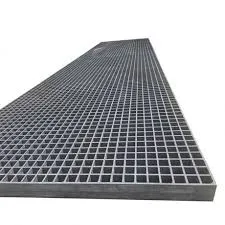
-
 Afrikaans
Afrikaans -
 Albanian
Albanian -
 Amharic
Amharic -
 Arabic
Arabic -
 Armenian
Armenian -
 Azerbaijani
Azerbaijani -
 Basque
Basque -
 Belarusian
Belarusian -
 Bengali
Bengali -
 Bosnian
Bosnian -
 Bulgarian
Bulgarian -
 Catalan
Catalan -
 Cebuano
Cebuano -
 China
China -
 China (Taiwan)
China (Taiwan) -
 Corsican
Corsican -
 Croatian
Croatian -
 Czech
Czech -
 Danish
Danish -
 Dutch
Dutch -
 English
English -
 Esperanto
Esperanto -
 Estonian
Estonian -
 Finnish
Finnish -
 French
French -
 Frisian
Frisian -
 Galician
Galician -
 Georgian
Georgian -
 German
German -
 Greek
Greek -
 Gujarati
Gujarati -
 Haitian Creole
Haitian Creole -
 hausa
hausa -
 hawaiian
hawaiian -
 Hebrew
Hebrew -
 Hindi
Hindi -
 Miao
Miao -
 Hungarian
Hungarian -
 Icelandic
Icelandic -
 igbo
igbo -
 Indonesian
Indonesian -
 irish
irish -
 Italian
Italian -
 Japanese
Japanese -
 Javanese
Javanese -
 Kannada
Kannada -
 kazakh
kazakh -
 Khmer
Khmer -
 Rwandese
Rwandese -
 Korean
Korean -
 Kurdish
Kurdish -
 Kyrgyz
Kyrgyz -
 Lao
Lao -
 Latin
Latin -
 Latvian
Latvian -
 Lithuanian
Lithuanian -
 Luxembourgish
Luxembourgish -
 Macedonian
Macedonian -
 Malgashi
Malgashi -
 Malay
Malay -
 Malayalam
Malayalam -
 Maltese
Maltese -
 Maori
Maori -
 Marathi
Marathi -
 Mongolian
Mongolian -
 Myanmar
Myanmar -
 Nepali
Nepali -
 Norwegian
Norwegian -
 Norwegian
Norwegian -
 Occitan
Occitan -
 Pashto
Pashto -
 Persian
Persian -
 Polish
Polish -
 Portuguese
Portuguese -
 Punjabi
Punjabi -
 Romanian
Romanian -
 Russian
Russian -
 Samoan
Samoan -
 Scottish Gaelic
Scottish Gaelic -
 Serbian
Serbian -
 Sesotho
Sesotho -
 Shona
Shona -
 Sindhi
Sindhi -
 Sinhala
Sinhala -
 Slovak
Slovak -
 Slovenian
Slovenian -
 Somali
Somali -
 Spanish
Spanish -
 Sundanese
Sundanese -
 Swahili
Swahili -
 Swedish
Swedish -
 Tagalog
Tagalog -
 Tajik
Tajik -
 Tamil
Tamil -
 Tatar
Tatar -
 Telugu
Telugu -
 Thai
Thai -
 Turkish
Turkish -
 Turkmen
Turkmen -
 Ukrainian
Ukrainian -
 Urdu
Urdu -
 Uighur
Uighur -
 Uzbek
Uzbek -
 Vietnamese
Vietnamese -
 Welsh
Welsh -
 Bantu
Bantu -
 Yiddish
Yiddish -
 Yoruba
Yoruba -
 Zulu
Zulu
corrosion resistant fiberglass
The Advantages of Corrosion Resistant Fiberglass
Corrosion is one of the most significant challenges faced by industries involving harsh environments, such as chemical processing, oil and gas, marine applications, and wastewater treatment. Traditional materials like steel and aluminum often succumb to rust and degradation when exposed to corrosive substances. In response to this issue, the development of corrosion-resistant fiberglass has emerged as a transformative solution for numerous applications.
Understanding Corrosion-Resistant Fiberglass
Corrosion-resistant fiberglass, widely known as fiberglass-reinforced plastic (FRP), is a composite material made from a polymer matrix reinforced with glass fibers. This combination results in a lightweight, durable, and highly resistant material that can effectively withstand environmental stresses. The unique properties of fiberglass make it particularly suitable for applications where traditional materials would fail due to corrosion.
Benefits of Corrosion-Resistant Fiberglass
1. Durability One of the main advantages of corrosion-resistant fiberglass is its remarkable durability. Unlike metal, it does not rust or corrode when exposed to moisture or aggressive chemicals. This resistance leads to reduced maintenance costs and a longer lifespan for structures and components made from fiberglass.
2. Lightweight Fiberglass is significantly lighter than metals, making it easier to handle and install. This characteristic is particularly beneficial in industries such as aerospace and automotive, where weight reduction is crucial for efficiency and performance.
3. Cost-Effectiveness Although the initial investment in fiberglass products might be higher than that of traditional materials, the long-term savings associated with reduced maintenance and replacement make it a cost-effective choice overall. The longevity and durability of fiberglass often outweigh the upfront costs.
corrosion resistant fiberglass

4. Versatility Corrosion-resistant fiberglass can be molded into various shapes and sizes, allowing for greater flexibility in design and application. This versatility extends to a wide range of industries, including construction, marine, and chemical processing, where specific configurations are often required.
5. Thermal and Electrical Insulation Fiberglass exhibits excellent insulating properties, making it suitable for situations where thermal and electrical isolation is necessary. It does not conduct electricity, reducing the risk of electrical interference and enhancing safety in industrial applications.
6. Aesthetic Appeal Available in a variety of colors and finishes, fiberglass can be tailored to fit aesthetic requirements for both functional and decorative applications. This feature is particularly appealing in architectural designs where appearance is as important as durability.
Applications of Corrosion-Resistant Fiberglass
Corrosion-resistant fiberglass is widely used across various sectors. In the chemical industry, FRP is utilized in storage tanks, pipes, and fittings to transport corrosive liquids safely. In the marine industry, fiberglass boat hulls take advantage of its lightweight and anti-corrosive properties to ensure longevity and better fuel efficiency. Additionally, in construction, fiberglass is increasingly being used for roofing materials and structural components, providing both strength and weather resistance.
Conclusion
Corrosion-resistant fiberglass has firmly established itself as a reliable material for a multitude of applications, offering solutions to the persistent problem of corrosion. Its unique combination of durability, lightweight characteristics, cost-effectiveness, and aesthetic versatility makes it an attractive option for industries facing challenging environmental conditions. As technology continues to advance, the utilization of fiberglass in various forms is likely to expand, reinforcing its position as a critical material in modern engineering and construction. Whether for industrial purposes or consumer products, the benefits of corrosion-resistant fiberglass will play a significant role in shaping the future of material science.









